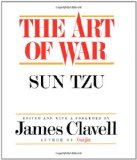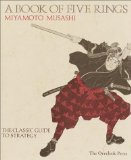by Dieter Stenger, Curator of Ordnance, United States Marine Corps Museum
During the 1920s and 1930s, the .30-caliber M1903 Springfield rifle served as the principle military service match rifle. In 1908, the M1903 became the official National Match (NM) rifle. By 1910, select rifles were test-fired and their barrels star-gauged for accuracy. In 1929, the NM rifle was modified with a Type-C stock in place of the non-pistol grip Type-S or “straight stock.” In this new form, the NM rifle was designated as the M1903A1 National Match.
In 1942, the Marine Corps opted the military version 8X Unertl telescopic target sight for use on the Springfield M1903A1 rifle. The M1903A1/Unertl combination was issued to Marine Snipers during World War II.
Marine Corps selection of sniper rifles was made after test-firing the rifles. Most had star-gauged barrels, but not all. Ordinary barrels were used if they performed well. After Unertl scope blocks were installed, trigger pulls were adjusted and the latest pattern components installed. These included parts received from the Springfield armories that were reworked by Marine armor personnel. There was no correlation between serial numbers and barrel dates.
Bolts were carefully fitted and electro-pen engraved with the rifle serial number and then blued. There is no conclusive evidence that suggests that all bolts were blued.
Bright NM bolts have been observed on M1903A1 sniper rifles. The hand guards were modified to fit the small front scope block. Once a M1903A1/Unertl rifle had undergone the prescribed modifications by a Marine armorer, the rifle was referred to as a “Model 1941 Sniper Rifle.”
Many, but not all, Marine Corps armorers adopted signature methods that included chalking or pencil-marking initials and rifle serial numbers inside the hand guards and stamping their initials on the stock.
Marine Sniper Rifle Characteristics
by Larry Reynolds
- Serial numbers ranging from 900,000 to 1,532,000.
- Rifles predating 1936 exhibit the second gas port as recommended by General Hatcher (believed USMC modification).
- Rails on almost all rifles were polished (NM).
- Centered rear Unertl scope block and butted against the rear sight.
- Top of receiver was ground to bare metal where sight bloc holes are drilled. Bare metal usually visible with bloc installed.
- Barrel punch mark at 6 o’clock, directly under the front bloc. Re-barreled rifles may not have mark.
- Serial numbers found on stock exhibiting NM features.
- NM heavy checkered butt plates.
- Pre-1936 rifles stamped with D.A.L. cartouche. Post-1936 stamped with SA over SPG.
- Milled trigger guards and housings. Staked screws on trigger guard.
- Standard front sights without covers.
- Standard 1905 rear sight with pre-World War I notch.
- World War II replacement hand guards with single straight cut for windage knob.
- Bolts polished, numbered and blued.
- Bolts marked on top of root where it joins body for type of steel. Most NS for nickel steel, last production marked D1.
- Early Hatcher Hole modified bolts have a single gas hole modified to larger hole.
- Later bolts, for factory receivers with Hatcher Hole, have two gas holes in bottom.
- Later bolt extractors marked CV (chrome vanadium).
- Scope blocks lettered on bottom, 0 – rear and E – front.
- 7.8 x 1-1/4″ objective, 24″, Unertl Target scope with 1/4 or 1/2 minute clicks and anodized Duraluminum mount.
- Scope marked USMC SNIPER and serialized from low 1,000 to high 2,775.
- Scopes finished with commercial blue.
- 1047 Team Rifles were available at Philadelphia for conversion to sniper. Sale of surplus USMC 03 rifles (Marine Corps only) began Fall 1954, mostly to Marine officers.



